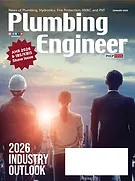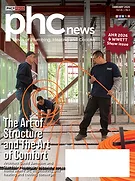The result of plumbing installations in your construction project starts with providing the right product specification. Among all the other tasks you have on your plate, sometimes updating the sheet falls further and further down the to-do list.
However, this is one document you don’t want to push off updating. Making the specs vague or including outdated recommendations could produce results less than ideal for your client. That’s why plumbing engineers should periodically revisit the products listed and see where they could make improvements.
Signs You Should Update Your Specs
It can be easy to copy and paste your spec from project to project, making minimal adjustments. However, do that regularly and you may not realize when a manufacturer has gone out of business, or a certain product has been discontinued, leading to inaccurate guidelines for contractors. These are a couple of key indicators that it’s time to update your document:
• You have specifications available, but contractors can’t find the product included in the sheet because it’s not available. This could indicate you have listed outdated manufacturer or product information.
• You’re getting a lot of substitution requests for a product that isn’t in your spec. It may be worth looking into the product’s performance parameters to see if it outperforms the options you have listed.
• And if you haven’t thoroughly reviewed your specifications in over a year, it’s time for an update.
Benefits of Updating Specs
By keeping a regularly updated specification document, installers can easily find the products and materials they need for the project, benefiting you and the build in the following ways:
• Improved jobsite performance. Without precise specs, most contractors will gravitate toward the most budget-friendly option, which may not result in a quality installation. Some may even resort to makeshift methods that are unreliable and inconsistent. Outdated or field-devised installation techniques and products put a strain on your project budget and can be tedious to the point they throw off the job schedule. And in the end, if the design doesn’t pass inspection, it’s even more time wasted.
By listing a specific product or method, you outline requirements ensuring proper installs, which help prevent system failures and warranty issues. And detailed specs help minimize change orders and value engineering in construction. They also help simplify the submittal process and minimize Requests For Information — which tend to delay projects.
• Better product capabilities. Manufacturers such as Reliance Worldwide Corp. (RWC) spend time on the jobsite seeking feedback from contractors on where current solutions fall short. They then incorporate that feedback into product development to design solutions that streamline installation and improve performance parameters — all while remaining code-compliant.
By updating your document, you include the most advanced plumbing technology, which can reduce installation steps and minimize room for error. Those systems are more likely to be designed to achieve code compliance right out of the box or with very little effort.
• Potential cost savings. Sticking to what we know can be a comfort, but it also can cost us time. Updating specs to include more modern commercial plumbing solutions can make installations faster, require fewer materials and tools, and minimize additional costs from failed inspections or potential installation failures down the line.
• Maintain your firm’s reputation. A project that develops problems reflects poorly on your firm and the plumbing design team. When you use trustworthy products that support projects long-term, you protect your work and build a reputation for prioritizing the interest of your clients with predictable, high-quality results. And the more detailed you are, the less room there is for inconsistencies and different levels of quality.
How to Update Specs
With the right help, you won’t need to do the heavy lifting. Let trusted manufacturers be your allies in tightening up and fine-tuning your specifications. Look for companies, such as RWC, that help you simplify the process by:
• Offering free assistance and authorship of your specs. Also, look for help with building information modeling, 3D models, tech assistance and training.
• Helping contractors create submittals so they’re easier for you to review and approve.
• Providing product knowledge and installation training in person or virtually, giving you — and contractors — more confidence in the integrity of the installation.
• Conducting CEU training or a Lunch-and-Learn for your staff.
Providing accurate specification documents for contractors is a best practice. It helps maintain timelines, budgets and project longevity, positively impacting overall job quality.
Jim LeStage is the specification sales manager at RWC, a manufacturer of water control systems and plumbing solutions for residential, commercial and industrial applications.





